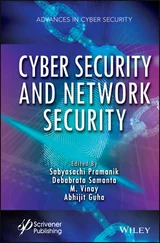■ Disk drivesDisk drives provide one of the fastest ways to back up and restore files. With disk drives, you can often accomplish in minutes what takes a tape drive hours. When business needs mandate a speedy recovery, nothing beats a disk drive. The drawback to disk drives is a relatively high cost compared to tapes (though you’d also need to compare the initial hardware investment).
■ Disk-based backup systemsDisk-based backup systems provide complete backup and restore solutions by using large arrays of disks to achieve high performance. High reliability can be achieved when you use redundant array of independent disks (RAID) to build in redundancy and fault tolerance. Typical disk-based backup systems use virtual library technology so that Windows perceives them as autoloader tape library systems, which makes them easier to work with. An example enterprise solution has 128 virtual drives and 16 virtual libraries per node for total storage of up to 7.5 TB per node. When fully scaled, this enterprise solution can store up to 640 TB and transfer up to 17.2 TB per hour.
NOTE Disks and disk-based backup systems can be used between the servers you are backing up and an enterprise autoloader. Servers are backed up to disk first (because this is very fast compared to tape) and later backed up to an enterprise autoloader. having data on tapes also makes it easier to rotate backup sets to off-site storage. That said, tape backups are increasingly being replaced with disk backups. If you back up to disk arrays, you can move data off site by replicating the data to a secondary array at an alternative data center and that data center can be in your private cloud or a third-party service’s cloud.
Before you can use a backup device, you must install it. When you install backup devices other than standard tape and DAT drives, you need to tell the operating system about the controller card and drivers that the backup device uses.
Buying and using backup media
Selecting a backup device is an important step toward implementing a backup and recovery plan. But you also need to purchase the tapes, disks, or both that enable you to implement your plan. The number of tapes or disks you need depends on how much data you have to back up, how often you need to back up the data, and how long you need to keep additional data sets.
The typical way to use backup tapes is to set up a rotation schedule whereby you rotate through two or more sets of tapes. The idea is that you can increase tape longevity by reducing tape usage and, at the same time, reduce the number of tapes you need to ensure that you have historic data on hand when necessary.
One of the most common tape-rotation schedules is the 10-tape rotation. With this rotation schedule, you use 10 tapes divided into two sets of 5 (one for each weekday). The first set of tapes is used one week, and the second set of tapes is used the next week. On Fridays, full backups are scheduled. On Mondays through Thursdays, incremental backups are scheduled. If you add a third set of tapes, you can rotate one of the tape sets to an off-site storage location on a weekly basis.
The 10-tape rotation schedule is designed for the 9-to-5 workers of the world. If you’re in a 24 hours a day, seven days a week environment, you’ll definitely want extra tapes for Saturday and Sunday. In this case, use a 14-tape rotation with two sets of 7 tapes. On Sundays, schedule full backups. On Mondays through Saturdays, schedule incremental backups.
As disk drives have become more affordable, many organizations have been using disk backup instead of tape backup. With disks, you can use a rotation schedule similar to the one you use with tapes. You will, however, need to modify the way you rotate disks to accommodate the amount of data you are backing up. The key task to remember is to periodically rotate disks to off-site storage.
Selecting a backup utility
Many backup and recovery solutions are available for use with Windows Server 2012 R2. When selecting a backup utility, you need to keep in mind the types of backups you want to perform and the types of data you are backing up. Windows Server 2012 R2 includes the following installable backup and recovery features:
■ Windows Server BackupA basic and easy-to-use backup and recovery utility. When this feature is installed on a server, you can open the tool by using the Tools menu in Server Manager.
■ Backup Command-Line ToolsA set of backup and recovery commands accessible through the Wbadmin command-line tool. You run and use Wbadmin from an elevated, administrator command prompt. Enter wbadmin /?for a full list of supported commands. Windows PowerShell cmdlets for managing backups are also available.
■ Windows Server Backup Module for Windows PowerShellA set of backup and recovery cmdlets accessible through Windows PowerShell. You run and use these cmdlets from an elevated, administrator Windows PowerShell prompt. Enter get-help *wb*for a full list of supported cmdlets.
■ Microsoft Online Backup ServiceThis service is an add-on that can be downloaded and installed from within Windows Server Backup to schedule backups from a server to Microsoft’s Internet cloud-based service. Online backups are possible only for fixed NTFS volumes that don’t use BitLocker Drive Encryption. Volumes cannot be shares and must also be configured for read/write access.
■ Repair Your ComputerYou can restore a server by using repair options if you cannot access recovery options provided by the server manufacturer.
NOTE Windows Server Backup and the backup command-line tools are available only for management of backups when you add the Windows Server Backup feature to a server. If you add server administration tools to a server, you might be able to open Windows Server Backup. however, you won’t be able to use Windows Server Backup to configure and manage backups.
Windows Server Backup is the feature you’ll use the most. You can use Windows Server Backup to perform full or copy backups. You cannot use Windows Server Backup to perform differential backups. Windows Server Backup uses the Volume Shadow Copy Service (VSS) to create fast, block-level backups of the operating system, files and folders, and disk volumes. After you create the first full backup, you can configure Windows Server Backup to automatically run full or incremental backups on a recurring basis.
When you use Windows Server Backup, you need separate, dedicated media for storing archives of scheduled backups. You can back up to external and internal disks, DVDs, and shared folders. Although you can recover full volumes from DVD backups, you cannot recover individual files, folders, or application data from DVD backups.
NOTE You cannot back up to tape by using Windows Server Backup. If you want to back up to tape, you need a third-party backup utility.
You can use Windows Server Backup to easily recover individual folders and files. Rather than manually restoring files from multiple backups if the files are stored in incremental backups, you can recover folders and files by choosing the date on which you backed up the version of the item or items you want to restore. Windows Server Backup also works with the Windows Recovery tools, making it easier for you to recover the operating system. You can recover to the same server or to a new server that has no operating system. Because Windows Server Backup uses VSS, you can easily back up data from compliant applications, such as Microsoft SQL Server and Windows SharePoint Services.
Windows Server Backup also includes automatic disk management. You can run backups to multiple disks in rotation simply by adding each disk as a scheduled backup location. After you configure a disk as a scheduled backup location, Windows Server Backup automatically manages the disk storage, ensuring that you no longer need to worry about a disk running out of space. Windows Server Backup reuses the space of older backups when creating newer backups. To help ensure that you can plan for additional storage needs, Windows Server Backup displays the backups that are available and the current disk usage information.
Читать дальше






